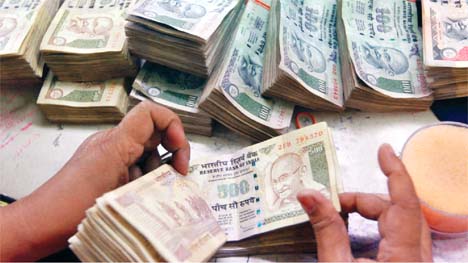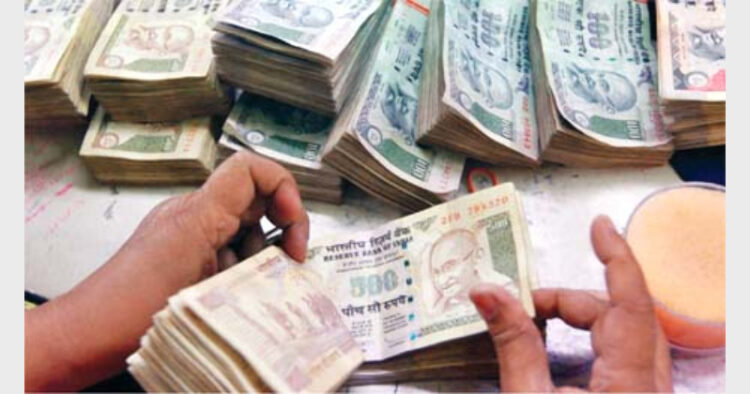 It is a happy situation that the country has started looking at what the nation gained rather than at what was the loss after the demonetisation
It is a happy situation that the country has started looking at what the nation gained rather than at what was the loss after the demonetisation
Ranjith Karthikeyan
The initial response of many economists, political observers and finance professionals who supported the demonetisation
decision was that there could be a windfall of as much as three lakh crores for the Government.
Now, the Reserve Bank of India’s DeMo data shows only 0.16 lakh crores. The Modi government has failed; the media—both social and not so social—have started the celebrations. But did we—the nation—fail?
Why did the Government take this hugely disruptive decision? Was it not for flushing out the black money, eliminate the Fake Indian Currency Notes (FICN), strike at the root of terror financing and Maoist extremism, bring the informal economy into the mainstream and increase the tax base and employment, and progress towards a less-cash economy?
It is a happy situation that the country has started looking at what the nation has gained rather than at what was the loss—to borrow the words of the PM in his Lok Sabha speech.
Black Money
Any “income that is illegally obtained or not declared for tax purposes” is termed as black money. With the deposit of 15.28 lakh crores of SBN into the banking system, a significant portion thereof will have to be explained by the depositors. Already, 18 lakh bank accounts do not match the tax profile. As of now, only a little more than half of these accounts when queried, responded and the amount involved is to the tune of about 2.89 lakh crores. The Income Tax Department has already unearthed 17,526 crores as undisclosed income up to May 2017 and the figures can be staggering by the end of this financial year.
The overwhelming response to the withdrawal of SBNs does not focus on the fact that not all of these deposits are squeaky clean. Many will have a lot to explain to the tax authorities. If we are to believe the Finance Minister, the objective of demonetisation was not to confiscate black money but to bring it into the formal channels and tax it.
FICN
There was a 20.40% increase in the detection of counterfeit notes during this fiscal. About 7.1 pieces per million of Rs. 500 note and 19.1 pieces per million of Rs. 1,000 notes were found to be fake. Withdrawal of the SBNs made way to a process and system of printing, which is now aligned with global best practices. The various tolerance parameters for dimension, placement of the design, print features now in place will make it extremely difficult for a new set of fakes to come into the market.
Terror Funding
No terrorist will do an account transfer. With the entire cash back in the vaults and the identity of its owners established, funding of illegal activities will be effectively checked. Already there has been a significant decline in Maoist activities, stone pelting in J&K and jihadi activities to destabilize India. The perpetrators of crime may look at other options – with a little help from the enemies within – but it has certainly become much more difficult for them to operate.
Merger of Economies
India has always thrived on the co-existence of the formal and informal economies. The formal took away all the benefits like subsidies, bank finance, export benefits, price support, etc. As a result, the real contributors to the economy were left to suffer huge financial costs, non-access to markets, government support and the like, which created a huge disparity among the business community. Now with the entire cash back in the system, there certainly will be a shift in the way the Small Scale and Cottage Industry performs. With the Pradhanmantri Jan Dhan Yojana reaching out to one and all, the transition has begun. People have started getting the benefits, and there will be more in no time.
Widening of Tax Base
This was certainly the biggest takeaway for the Government. There has been a substantial expansion of the direct tax base. Personal income tax returns have increased over 25%, according to initial reports on GST collections from transactions routed through the official system. A greater Tax-GDP ratio can be expected, which will help the Government rationalize and further reduce tax rates in the years to come. The very fact that reported and tracked suspicious transactions rose from 106,273 in 2015-16 to 473,003 in 2016-17 is clear proof that not many transactions can avoid the taxman’s scrutiny. The tax base is going to be much bigger as the economy does.
Employment Generation
The ground has been laid for employment generation. One major criticism of the Government is that if at all there was growth post-DeMo, it was “jobless growth.” But the direct impact of DeMO on employment generation is not yet measured. The economy is only beginning to churn at this point with the banks flush with funds—despite their non-performing loans crisis—and lending rates and norms more rationalized today. A sustained positive outlook on the economy—with a little help from all the stakeholders—a manufacture and exports based strategy and reforms in labour laws will lead to a bigger eco-system for inducing greater productivity and multiplying job creation across the country. The DeMo alone is not the one trigger for generating employment across the country.
Less Cash Economy
The 60-70% rise in digital transactions since November 2016 is seen as positive for those fed up of the opaque system long prevalent in the country. The shift from a cash economy to a digital economy will have to become a habit, and habit formation does not happen overnight without an unavoidable compulsion—like DeMo. There is no denying that the move towards a less-cash economy has been on for several years, but it was Modi who took the great political risk and delivered the real impetus. Today, the growth of a parallel economy is severely restricted while the tax net has widened. With the linking of Aadhaar and PAN, digital money is now a significant mainstay of the economy. The stage is set. This is no time for the armchair critics to rule on the success or failure of DeMo, which was only a trigger for the economic transformation underway.
The Government has brought in a very big disruption in the way the Indian economy is run. DeMo’s biggest take-home is the transparency. Its estimated cost—both tangible and intangible—of Rs.1,11,640 crores is no small investment by the country. Payback will have to be only with the active participation of the entire population—businessmen, politicians, policy makers and, above all, consumers. Economic transformation is underway on a clean slate. Everybody is aware that black money, if not turned white, has at least turned grey today.
(The writer is convener of Swadeshi Jagran Manch, Kerala)













Comments